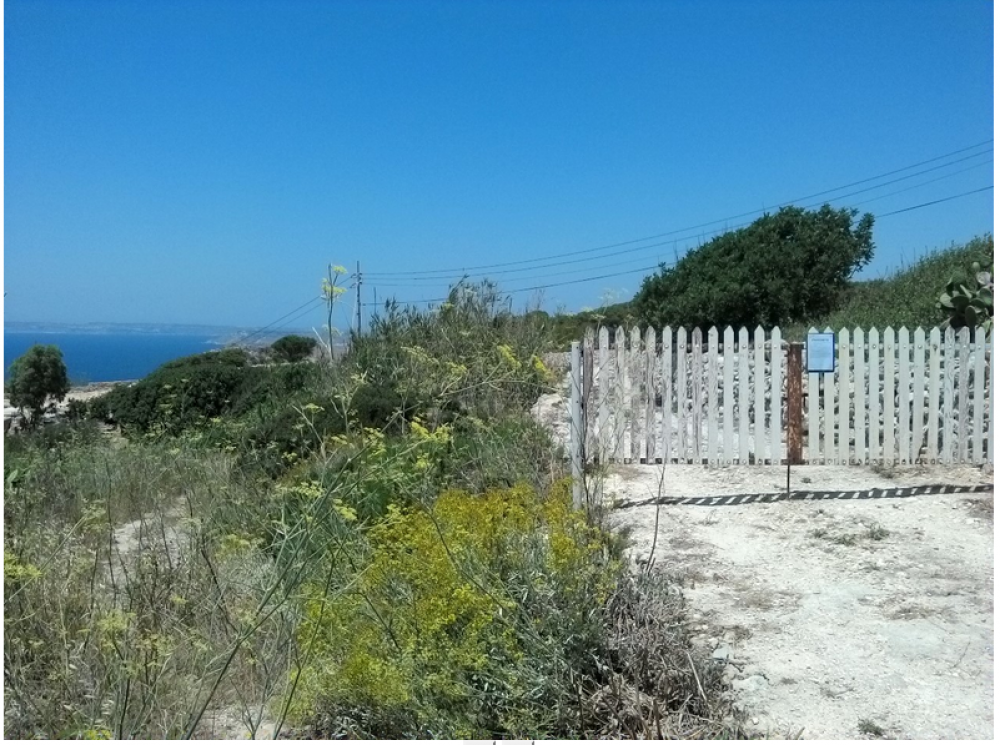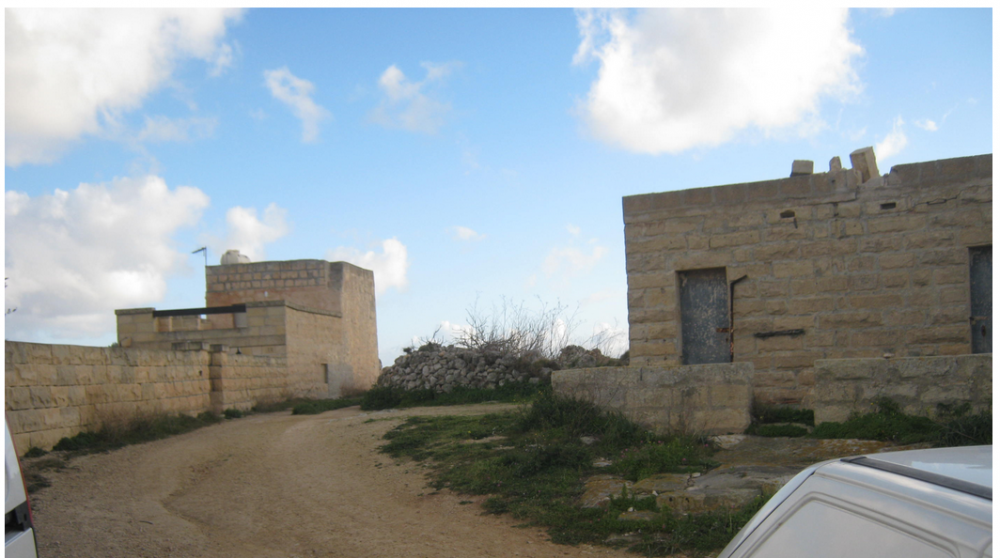[ANALYSIS] How planning magic turned ruins to villas
MaltaToday probes the permits granted over the past four years allowing ruins to be transformed into villas through policies which the Environment and Resources Authority has described as ‘contorted’ and ‘abusive’

A 31sq.m dilapidated room in Qala was allowed to be transformed into a full-blown 200sq.m villa on the strength of a controversial policy approved in 2014.
This decision by the Planning Authority has re-awakened the debate on this policy, which paved the way for the conversion of country side ruins into full-blown dwellings.
To do so, applicants have to prove the ruins were dwellings at some point in time.
A spokesperson for the PA confirmed that a review of this policy was initiated by its executive council in April 2018. More than a year later “the meetings of this committee are still ongoing”, the spokesperson said.
The committee is made up of representatives from the Environment and Resources Authority, the Planning Authority, the Malta Developers Association, the Kamra tal-Periti, representatives of the Opposition and the government, the department of agriculture, environment NGOs, the department of agriculture and other ministries.
The Planning Authority was unable to supply MaltaToday with the number of permits issued under the controversial policy because specific statistics are not kept.
A probe by MaltaToday of 12 planning permits issued in the past years and two other applications which are awaiting approval, reveals that apart from vague reference to properties in old electoral registers dating to the beginning of the century, applicants have even resorted to affidavits by relatives and priests to prove past residential use.

‘Abusive and contorted’
In 2018, the Environment and Resources Authority had denounced “the contorted practice of using existing rural ruins to obtain a permit to accommodate an urban type development”, adding that this was “tantamount to abuse”.
ERA was commenting on an application to construct a 200sq.m villa together with a deck area, a swimming pool and a drive in Sqaq iż-Żebbiegħ in Siġġiewi, instead of the crumbling walls of a past structure.
The application was approved in February 2019 because the applicant provided sufficient residential proof in the form of extracts from the 1928 and 1930 electoral registers, linking a registered voter and the property.
My uncle lived there - Australian pensioner
But some of the approved applications included an even more bizarre proof of residence.
A permit issued in 2015 regarding a redevelopment of an old structure in Binġemma Road in Mġarr was issued on the basis of a declaration by a pensioner living in Australia who “distantly remembered” his uncle inhabiting the buildings between 1954 and 1960.
The permit envisaged a new dwelling with a total footprint of 153sq.m. While in this case the new building will only be slightly greater than the existing one, other permits issued involved a substantial extension.

How to turn a historical relic into a villa
One such case involved the approval in 2015 of a 43sq.m vernacular structure dating back to the times of the Knights of St John, into a 140sq.m dwelling in Triq Ġebel Għawżara in Bidnija.
The permit was issued despite the contrary opinion of the Superintendence for Cultural Heritage, the Planning Directorate and the Environment Planning Directorate.
The Planning Commission justified the permit on the basis that the miniscule building was already used as a residence in the past as proven by past electoral registers.
Another controversial permit was issued in an Area of High Landscape Value and Special Conservation Area, in Fawwara, limits of Siġġiewi.
The application approved in 2015 regularised an illegal extension, which had already been rejected twice by the Planning Authority.
It was subsequently approved on the basis of electoral registers issued between 1939 and 1954.
Once upon a time… 21 people lived in five rooms
The policy was again invoked in 2015 to issue a permit for the demolition of three roofless structures to be converted into a 165sq.m villa with a swimming pool, outside development zones in Rabat’s Landrijiet.
The proof of residence consisted of the 1970 electoral register, which showed that 30 voters were registered at Wied Busbies, 21 of whom were registered in a building known as ‘the farmhouse’.
The case officer disputed this evidence, insisting that there was no proof that the farmhouse mentioned in the electoral register was found on the site of the ruins. But the permit was still issued.
The PA has also permitted the demolition of a number of dilapidated rooms – occupying a footprint of 122sq.m – to make space for a 200sq.m villa in the Tal-Palma area in Mġarr.
The proof of past residence consisted of a lease contract signed in 1915, which refers to someone living in “five rooms” in Tal-Palma.
In 2018, the PA approved a 189sq.m villa instead of an old 50sq.m room, with a habitable internal area of only 25sq.m, accessible through a country lane linked to Triq il-Lewż in Siggiewi’s Ta’ Xurraf area.
During the processing of the application, the architect submitted an extract from the 1939 electoral register to prove its previous residential use.

When a pile of rubble was turned into a villa
The Planning Authority also issued a permit for the rebuilding of a two-storey dwelling set over a footprint of 141sq.m of land instead of a pile of rubble in Sqaq il-Fata, lying outside the development boundaries in Żabbar.
Subsequently, a permit was issued for a pool in the curtilage of the new development.
The PA has also approved a 180sq.m terraced house in Kerċem instead of another pile of rubble. The proof of previous residence consisted in the electoral register of 1902 and the superimposition of an 1898 map with recent aerial photography, which showed that the building mentioned in the electoral register “coincided with the ruins present on site today”.
From ruins to guest houses
In 2017, two brand new dwellings were approved in the Wied Għomor valley in St Julian’s instead of two dilapidated dwellings.
The dwellings were approved after sufficient proof of previous residence was presented in the form of electoral registers dated 1981, 1982 and 1985.
Subsequently the owner applied to change the approved dwellings into a guest house. The application is still pending.
A tower in the countryside
In cases where past proof of residence is impossible to obtain, ruins have also been rebuilt into agricultural stores.
The most notorious case involved the approval of the “reconstruction” of a tower-shaped two-storey building in the middle of the Żebbuġ countryside in Gozo, instead of a pile of rubble.
The new building has a floor space of 50sq.m connecting the two storeys through a spiral staircase.
Aerial photos dating back to 1978 showed “structural remains” and the two-storey height of the building was deduced “from the shadow of the structure”.
Old photos of the structure were also submitted “showing remains of the tall façade of the old agricultural store”.

A declaration by a parish priest
In August, the PA is expected to decide on the construction of a 150sq.m residence instead of a 66sq.m structure next to l-Palazz ta’ Ċensu at Ta’ Ċenċ in Gozo.
In this case, the only proof of previous residence is a declaration by the Sannat parish priest that a certain person used to live in the structure until 2006.
The case officer is insisting that this does not constitute proof of residence. ERA is objecting since the development will commit a much larger built footprint than the existing farmhouse.
Another recently presented application which is still being assessed by the PA involves the construction of a 200sq.m two-storey “vernacular farmhouse” with pool in the picturesque tat-Tilliera area in Baħrija.
The brand-new building would be constructed instead of “existing structures” mostly consisting of roofless rooms.
What the policy states
With regards to ordinary structures with no vernacular values, owners have to prove past residential use in order to apply for their demolition and redevelopment according to the terms of Policy 6.2.C.
The Rural Development Guidelines also include a clause (Policy 6.2.A) which specifically allows the “rehabilitation and change of use of architectural historical or vernacular interest” allowing their transformation into dwellings.
In such cases, the developer can’t demolish the building but can apply to enlarge it.
Moreover, any structure built before 1978 is deemed to be legal and therefore eligible for redevelopment.
Therefore, it can be rebuilt for the same purpose for which it was originally constructed.
In this way, even the ruins of buildings appearing on pre-1978 survey sheets and aerial photos can be rebuilt.
Policy 6.2.A, specifically allows the construction of a dwelling (even if the former use was not residential), provided the existing building to be converted has a minimum area of 100sq.m.
But with regard to dwellings whose past residential status is proved, development can also be permitted, falling short of this threshold.
Other policies also enable any owner of an ODZ dwelling to apply for a 75sq.m swimming pool and deck area, which means that dwellings approved instead of ruins can still benefit from this development.
In cases where it is impossible to apply for a residence some are applying for stables, agricultural stores and other developments permitted by the policy.
This is why cranes have now become a more common occurrence in the deep heart of the countryside in the past few years.









.png)
















